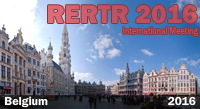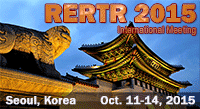Abstracts and Available Papers Presented at the
2005 International RERTR Meeting
ANALYSIS OF FACTORS INFLUENCING FORMATION OF PORES AND PILLOWS IN UMo FUEL
A.M. Savchenko, А.V. Vatulin, I.V.
Dobrikova, G.V. Kulakov, S.A. Ershov, Y.V. Konovalov
A.A. Bochvar All-Russia Research Institute of Inorganic
Materials (VNIINM)
123060, P.O.B. 369, Rogova St., 5A, Moscow, Russia
ABSTRACT
Consideration is given to stages of irradiation induced UMo fuel-aluminium matrix interaction resulting in pores and pillows. They involve fission fragments releases out of fuel into matrix to form a damage rim, growth of interaction layer in the matrix direction with fission fragments displacement to interaction layer – matrix boundary, fission products concentration at interaction layer – matrix boundary, formation of “shears” on interaction layer, fission gas products piling up in voids, pressure increases, formation of pillows. Interaction mechanism at each stage and factors influencing interaction are discussed in detail.
The analyses of the results in pile test investigations take us to the conclusion that additional factor, influencing interaction is technologic factor, i. e. the local pileups of fuel particles. Irradiation produced pores and discontinuities are most often encountered either between UMo fuel particles or within their pileups. In those regions rims of fission fragment effected damages overlap and the value of the local burnup in those regions related not to an individual particle but to the microregion of a fuel component is much higher. Estimation of pileups influence for various types of fuel elements is made and methods reducing the non-uniformity of fuel in local regions are suggested.
The expense of thermal spikes induced by fission products leads to formation of an intricate structure of (U,Mo)Al7 type with excess of Al. To our view it is a finely dispersed mixture of phases consisting of UAl3 phase, pure Al and a small amount of UMo2Al20. It has been shown that depending on irradiation conditions such a structure might transform to a thermodynamically stable structure of (U,Mo)Al3 type. Experimentally acquired data are presented, that pertain to formation of identical type structures with excess Al in binary U-Al system without Mo. Under out of pile conditions structures were obtained that simulate those of intermetallic compounds having Al microinterlayers.
![]() PDF version available
PDF version available
DOWNLOAD full paper in PDF format.
Contact:
Dr. Jordi Roglans-Ribas
Technical Director, RERTR Department
Nuclear Engineering Division – 362
Argonne National Laboratory
9700 South Cass Avenue
Argonne, IL 60439
Fax: +1 630-252-5161
![]()




